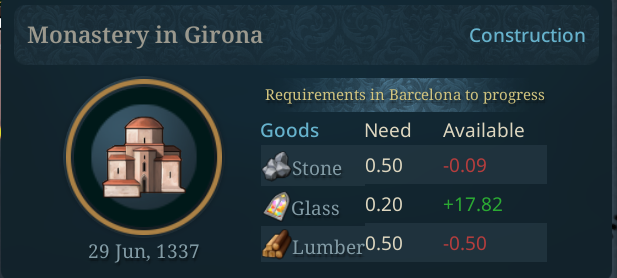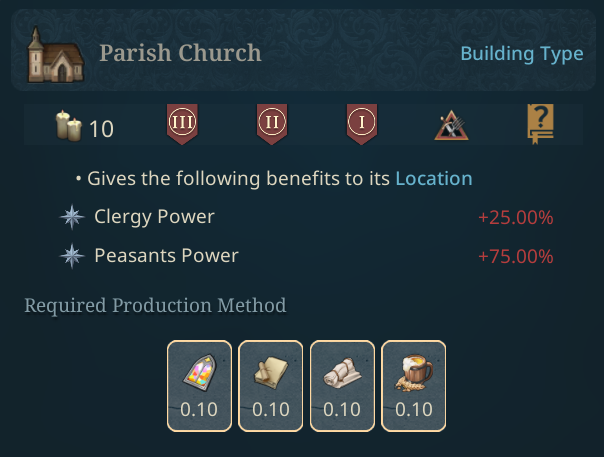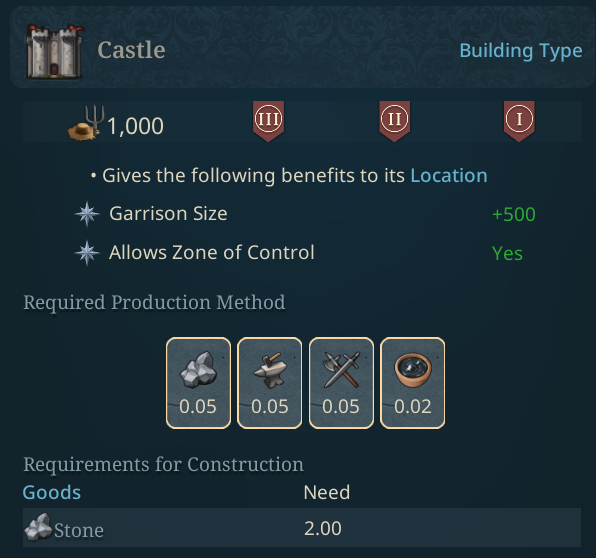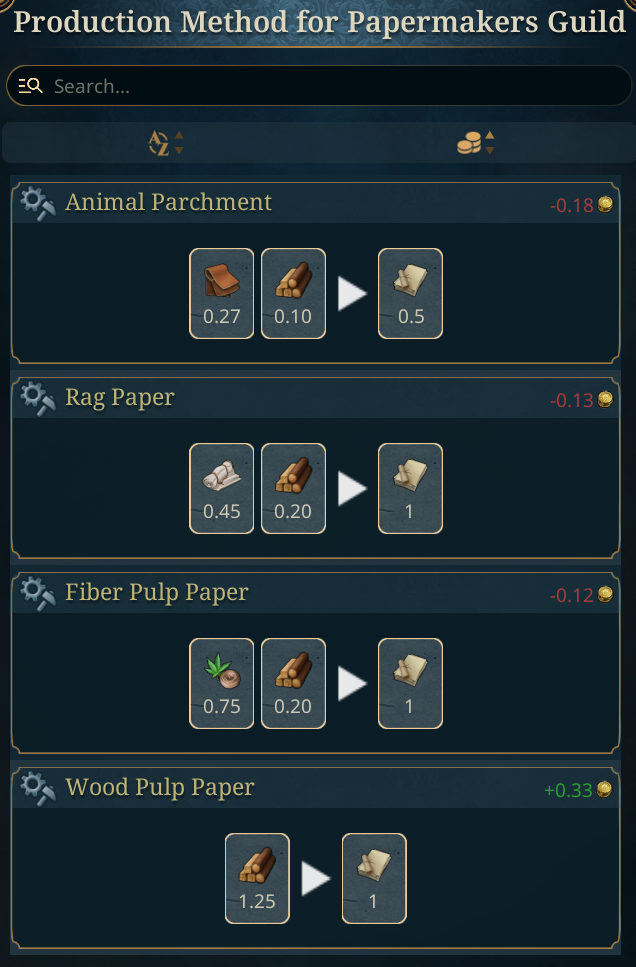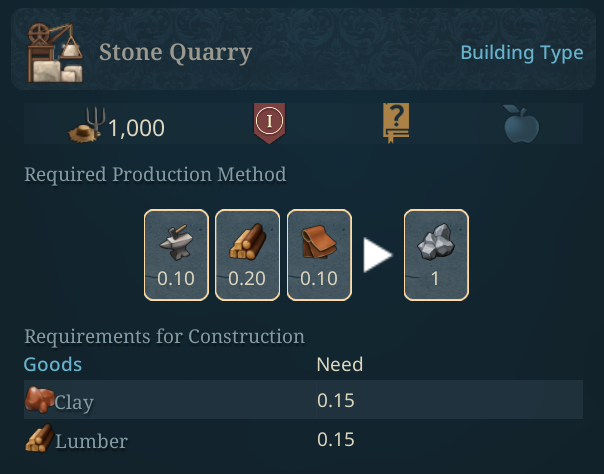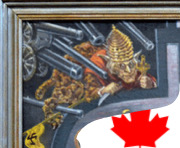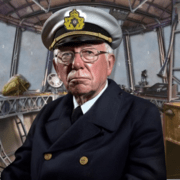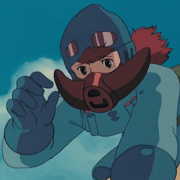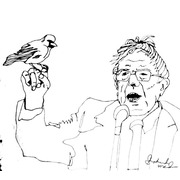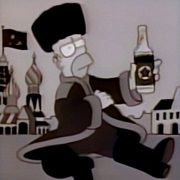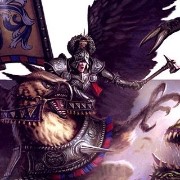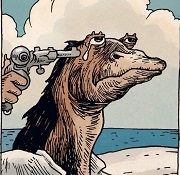|
Bro Dad posted:lmao Buck Wildman posted:*throws FT in the trash, picks up copy of wallstreet journal*
|
|
|
|

|
| # ? May 6, 2024 14:32 |
|
quote:Tinto Talks #9 - 24th of April 2024
|
|
|
|
Factions of The Weimar Republic: NSDAP This overview provides perspectives on why the National Socialists is a playable faction in The Weimar Republic, as well as some insight as to how the faction actually functions in gameplay terms. Future posts will highlight the other playable factions and the game’s general mechanics in a more detailed manner. First off, I’d like to mention the solo system, designed by Joe Schmidt. This simple yet dynamic system can substitute any faction for a card-driven set of automated impulses that are easy to use and require no complex flowcharts. With Joe’s system there is precious little downtime as well, as the “bots” do not contemplate strategies or actively try to win the way a human player would. Rather, they provide an increased level of difficulty for the human player(s) to achieve their victory conditions. Obviously this addition to the game is a great asset, both for players who wish to play but lack the full number of human opponents required, and for those who simply want to avoid playing any given faction. With the solo rules you can still experience the harsh, dog-eat-dog atmosphere of The Weimar Republic, shaping Germany’s destiny in the process. Introduction: the importance of human agency While The Weimar Republic is not primarily intended as a history lesson, it does allow players to delve deep into a difficult and complex period in European history – a period whose importance becomes even more apparent when one ponders both its actual and its potential outcomes. The most disturbing aspect of this period is obviously the rise of Hitler, which is represented in the game by the NSDAP playable faction.  To most people today, the National Socialist movement has come to represent the very epitome of evil. “The Nazis” are the stereotypical go-to bad guys of history, and with the privilege of hindsight it may seem strange that so many people once chose to support their rise to power. With this in mind, taking on the role as Adolf Hitler, actively trying to replace democracy with a totalitarian dictatorship, could well be an uncomfortable experience for many. Why would anyone want to do that in a board game? The whole topic of The Weimar Republic can indeed be considered controversial in this sense; why use the board game medium for such a horrific subject as the fall of democracy and the rise of fascism? If you take the viewpoint that evil acts are exclusively committed by evil people, these questions are hard to answer. But evil acts are commited by all sorts of people. The National Socialists, just like everyone who supported them, were indeed people – most of them ordinary people with the same concerns that ordinary people have had throughout history: they desired security, prosperity and dignity for themselves, their families and their country. All this the NSDAP promised to restore to them, at a desperate time, when liberal democracy had failed to deliver and the options were becoming scarce. Even though both racist and anti-semitic sentiments were prolific in Germany long before the NSDAP took over (sentiments that both Hitler and others exploited to the best of their ability), few ordinary Germans dreamed of World War and genocide as they cast their votes for the National Socialists in the early 1930s. Rather, they wanted radical change and were out of credible alternatives. This was not the first time, and certainly not the last, that ordinary people flocked to a movement that appealed to their basic desires through the use of strong imagery and powerful rhetoric. In an age of mass media, mass meetings and mass culture, the mass ideology of fascism – especially in the hands of a gifted demagogue like Hitler – was well suited to the task. To understand why, one has to contemplate the historical context in which he rose to power. Ironically, the privilege of hindsight can sometimes work to our disadvantage when attempting to do just that.  While the spectre of totalitarianism is still present today, to most people living in a first-world country in the 21st century the appeal of 1930s fascism is very small indeed. But to someone who just experienced the humiliating cataclysm of the Great War and, in its wake, abysmal poverty and starvation, socialist revolutions and political violence bordering on civil war, combined with severe inflation followed by depression and mass unemployment, National Socialism’s promises of restored order and national unity would perhaps not appear too repugnant – especially when its worst crimes had yet to be committed. If we reduce historical events to simply a question of good versus evil, to a scene where heroes fight monsters, we tend to miss one crucial aspect of all history: human agency. If we refuse to recognize that The Nazis and their supporters were humans very much like ourselves, albeit living under very different circumstances and confronting very different problems, we will not be well equipped to understand why they did what they did, nor how they managed to do it. We will also be more prone to repeat history’s many mistakes and, in the long run, its most hideous crimes. Board games are all about human agency. In a political board game where people’s hearts and minds is a main currency, removing human agency from one of the main factions would render the narrative incomplete, even when the theme is as serious as in The Weimar Republic. Confronting the fact that totalitarianism is driven not by abstract and impersonal mechanisms, but by human emotions and desires, could well be the toughest part of playing a game of “what-ifs”. But history is full of difficult and disturbing subjects. Do we treat them best by shying away, or by confronting them with open eyes? Historical simulation or intellectual stimulation? My aim with The Weimar Republic has never been to offer an exhaustive historical account, nor a perfectly accurate simulation, of interbellum Germany’s political landscape. Rather, I wanted to create a game that I would want to play – asymmetric, cut-throat and full of interesting and hard choices – about a period of history that I find interesting. Given that the Weimar Republic was such a difficult and complex period, I also wanted to provide food for thought and stimulate further reflection, as opposed to providing fixed answers. Mechanically, The Weimar Republic is a CDG, with certain elements inspired by the GMT COIN series, and although it does portray this period in some detail (not least through the many event cards), it does not replicate historical outcomes in an exact manner. Not only would that be hard to pull of in a board game like this without excessive railroading, it would also be a most inaccurate depiction of history as being a lot more deterministic than it is. Not to mention that the probable result also would be a pretty boring experience, at least to me. As already mentioned, the strength of historical boardgames is the interplay between human agencies in a (semi-)historical framework of “what-ifs”. The premises may be historically correct, but the moment a session starts, things deviate from what actually happened. And that’s where the fun of playing boardgames begin.  That said, while providing an enjoyable playing experience has always been my top priority, it is of course important that the framework does justice to its historical counterpart. The Weimar Republic is a sandbox in many ways, but the setup and the general flow of events are directed by key turning points in Weimar history. Three unique decks of event cards (including several mandatory events) represent different eras in the life of the Republic, asymmetric victory conditions reflect the four factions’ very different goals and preconditions as well as their shifting internal relationships, and a number of scenarios explore the various contexts in which political struggle happened between 1919 and 1933. Many event cards require other specific event cards to already be in play for their event to trigger, which means that certain chains of events can only happen in the historically correct order (the cards are still playable and useful as they provide bonus actions, but the actual events will not trigger unless the prerequisite card is in play). An example of this is the ominous chain of events leading to Hitler’s seizure of power, represented by three event cards that need to be played in the correct sequence to have the historical effect: The Hindenburg Runs Again Event card allows play of the Hitler Sworn In card, which in turn allows play of the Enabling Act card. If the Hindenburg Runs Again card is not in play, the Hitler Sworn In card’s Event effect will not trigger and the card will not linger, meaning that the Enabling Act card’s Event effect will not trigger either. So NSDAP could potentially win by pulling off this sequence of events that mimics history, but other paths to victory are of course also available.  NSDAP victory and the death of democracy Historically, the NSDAP did not pose any serious threat to the Republic until the early 1930s, but they were present from the beginning and made themselves known throughout the 1920s. If circumstances had been different, they could well have made a bigger impact much earlier. Players who take on the full campaign scenario will be confronted by a grand total of one NSDAP influence cube in early 1919 (those who greatly care about the details will just have to imagine that it is actually a DAP, or Deutsche Arbeiterpartei, cube up until 1920), while the Democratic Coalition basically owns the entire map. This means NSDAP has to grow slowly, and stay under the radar as much as possible – if they instigate too much trouble in the streets or launch a Putsch too early (like they actually did in 1923 with the Beer Hall Putsch in Munich), the faction could have a hard time recovering and getting back on track. Better to let the Communist KPD take the flak and allow the Radical Conservatives to weaken democracy and undermine the loyalty of its armed forces. When the final deck of event cards comes around in 1930 and the economy track favors radicalism in the wake of economic crisis, the time could be ripe for a violent takeover or an electoral landslide – but it’s important to be careful so that the Radical Conservatives don’t use the Nazis for their own ends and usurp their victory. The NSDAP player can choose two general paths to victory, based on tools provided by the Party’s stance track. A democratic stance indicates a strategy aimed at a parliamentary victory, while a revolutionary stance means that all pretenses of a democratic Machtergreifung (Power Seizure) have been thrown by the wayside and overtly brutal methods are more readily available. It is of course important to point out that a “democratic stance” in no way implies that NSDAP ever was anything but an anti-democratic, violent, and totalitarian movement. A democratic stance is just that; a strategic stance meant to maximize the Party’s chances of seizing power within the democratic system. As history shows, Hitler wasted no time crushing the remnants of that system once it had served his purposes.  So how does this balance between democratic and revolutionary methods work in game terms? Let’s look at some of the tools available: Cadres (NSDAP and KPD both have their own Cadres) represent groups of leading individuals and networks of loyalists, as well as propaganda infrastructure like printing houses and meeting halls. For NSDAP, Cadres provide staying power and bonuses in elections as well as the opportunity to muster SA (Sturmabteilung, the NSDAP street fighters) more easily, but also the ability to shift Middle Class Sympathies, which is a crucial currency for both NSDAP and the Radical Conservatives. The notoriously fickle Mittelstand is an important aspect of the game’s dynamics – both right-wing factions need their support to win through sudden victory (i.e. a Putsch, or Coup d’Êtat), but not only that: NSDAP need more Middle Class Sympathies than the Radical Conservatives to win this way. By adopting a democratic stance, the NSDAP get access to more Cadres and thus more opportunities to gain Middle Class Sympathies. This reflects the historical importance of the middle classes and their tendencies to be torn both between right-wing and liberal values in general, and between the different, specific brands of these values. Most white collar workers, shop owners and public servants may have considered Hitler a vulgar upstart in the early 1920s and opted for the more classic conservatism of the old élites, but by 1930 their views had shifted considerably.  Assassinations represent waves of organized violence against political opponents, and are only available to NSDAP and the Radical Conservatives. Assassinations counters are double-sided; one side removes and blocks Coalition and KPD influence; the other side removes and blocks NSDAP and Radical Conservative influence. Thus, the player using Assassinations may choose which factions they wish to target (note that NSDAP and the Radical Conservatives will block their own faction when targeting one another, which reflects their symbiotic and parasitic relationship). Assassinations are a powerful, albeit limited, tool in the arsenal of an NSDAP pursuing the openly violent route. A more revolutionary stance makes an extra Assassinations counter available. Also the sudden victory Putsch counter is only accessible when the NSDAP stance is revolutionary. This may look like a simplistic dichotomy between the abstract categories “democratic” and “revolutionary”, but there is more to it than that. A core aspect of The Weimar Republic is the Progress/Reaction track, representing the interplay between progressive and reactionary ideas and policies. The Radical Conservatives need to get the Reaction level as high as possible, as it makes their influence cube placement much more effective and provides and extra conservative clique (basically, an extra influence node), but a high Reaction level also makes an extra Assassinations counter available, and provides the NSDAP with two more Cadres. This is another example of how the two far-right factions both feed off each other; without a high Reaction level the Radical Conservatives can not win, but a high Reaction level also gives the NSDAP plenty of room to steal those precious Middle Class Sympathies.  In essence, the NSDAP will have to assess the need to shift their stance as necessary to get the tools they need for their long-term strategy, exploiting the Radical Conservatives’ push for reactionary sentiments in the country, while at the same time maintaining and spreading their influence and paramilitary presence on the map. Brawls and beer halls: the importance of terror in the streets Politically motivated brawls, riots and full-on street battles were frequent in interwar Germany. During the early years of the Republic, the infamous Freikorps militia targeted KPD supporters and the other left-wing groups who were actively working for a socialist revolution, and it was not uncommon for demonstrations and brawls to explode into major confrontations with both the police and the regular army. As the National Socialist movement grew, clashes between Communist street fighters and the SA (who were generally recruited from the Freikorps ranks and with time came to replace them as the major far-right force on German streets) often took place at political rallies, or as planned attacks on locales where opponents were known to gather. In this violent environment, every self-respecting political movement needed its own paramilitaries. The SA street fighters were a crucial part of the NSDAP during the 1920s and well into the 1930s, at which time the organization had become a massive presence with over three million members – by far outnumbering the Reichswehr (German army) with its meager 100,000 men. In game terms, this means that the NSDAP player has to make effective use of the SA to establish secure footholds throughout the country. However, getting too involved in street violence will have its price; any faction instigating an assault on another faction suffers an immediate influence loss, as the general public condemn the violence. Such temporary setbacks could well be worth it in the long run though, as a faction with supremacy, or the highest number of militia and/or military units in a city or region, is immune to opponent removal of their influence from that space. Strong SA presence will also lay the groundwork for a successful Putsch; without supremacy in Berlin or two other cities, the NSDAP can not achieve sudden victory.  Hopefully this overview has provided some useful perspectives on why the NSDAP is a playable faction in The Weimar Republic and how the faction works in terms of gameplay. Next in line is Kommunistsche Partei Deutschlands who, despite being the Nazis’ sworn enemies, share some of their gameplay mechanics. If you’re interested in why this may be the case, or just want to know more about the game, make sure to read the upcoming TWR faction spotlight post!
|
|
|
|
Random question for you. One of the game dev people I know started contracting to Eugen (Red Dragon, WARNO) as an Understander, first with visual fixes to models, but eventually got enough influence to start suggesting balance changes and some mechanical redesigns. He mentioned to me once that he would love AT guns like the T-12 to also work as artillery, but the company doesn't really want to do it for balance reasons, since apparently only Pact did stuff like that with their guns. I was curious if this is correct. If so, was it doctrinal? Or did NATO AT guns physically not have the carriages needed to function this way? Or, I suppose, did they just... not have a lot of those guns?
|
|
|
|
Zeppelin Insanity posted:Random question for you. One of the game dev people I know started contracting to Eugen (Red Dragon, WARNO) as an Understander, first with visual fixes to models, but eventually got enough influence to start suggesting balance changes and some mechanical redesigns. That would be fantastic, and I hope they do so. NATO didn't have AT guns, moving to recoilless rifles very early on with WOMBAT and the M40. The M40 106mm RR that was standard in NATO could be used for indirect fire, but required a pit be dug for this when using the tripod mount, due to backblast. Mounted on jeeps, where it had more clearance from the ground, that wasn't really as much of a problem, though I don't know that the vehicle mounted ones were issued with aiming stakes and panoramic sights.
|
|
|
|
I find it fascinating that NATO understood they'd be fighting a tidal wave of T##'s yet they never bothered to build any AT guns at all. The wunderwaffe runs deep.
|
|
|
|
|
It's double odd because both the Western Allies and the Nazis used AT guns, so what exactly happened doctrinally that these brain geniuses figured they had to get rid of the whole concept?
|
|
|
|
because until HEAT warheads were figured out, the size and weight of an AT gun required to defeat a tank were getting huge, like the 128mm gun the Germans introduced in the last year of the war.  The rationale being, if they're going to be that big, it's better to us SP mounts. The M10 outperformed towed guns of the same calibre during the Battle of the Bulge. The Americans also never figured out a lightweight carriage for their (fairly decent) 90mm gun, so their best and most successful use was as a SP mount  versus the huge and unwieldy DP mount (exclusively used for AA purposes, and artillery once the Luftwaffe was defeated)  they had experimented with a towed AT carriage though 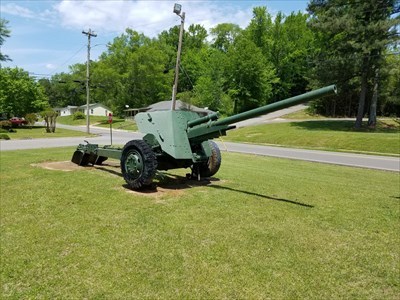 anyway, that being the case, the initial response was to use self-propelled mounts. When tank armour got even thicker in the late 50s and it seemed like guns would have to become impossibly large, by coincidence HEAT warheads made several radical leaps. The armour at the time was much weaker against chemical energy than kinetic, and would remain so until the 1970s with the Soviet composite armour. HEAT warheads work best at low velocity. By happenstance, that meant that they were perfect for shoulder and tripod fired recoilless rifles, which could be the same calibre as a tank gun in a tiny package, and at the time, have the same effect. So recoilless rifles immediately appeared everywhere, on jeeps, on tracked carriers, towed, shoulder fired. A little bit later, the first ATGMs appeared, also being slow HEAT projectiles that didn't require a large, heavy, gun to fire, and could defeat armour. For a variety of reasons, they coexisted with, and then with TOW, replaced, RRs in western militaries.
|
|
|
|
OK so given all that, why didn't the USSR and now China get rid of their AT guns also?
|
|
|
|
Zeppelin Insanity posted:Random question for you. One of the game dev people I know started contracting to Eugen (Red Dragon, WARNO) as an Understander, first with visual fixes to models, but eventually got enough influence to start suggesting balance changes and some mechanical redesigns. from my experience in steel division with at guns, the wargame era at guns will somehow be overpowered by killing off leopards and abrams while allowing you to creep motostrelki forward under at gun coverage
|
|
|
|
Orange Devil posted:OK so given all that, why didn't the USSR and now China get rid of their AT guns also? afaik it's literally just why throw away perfectly fine guns (all of china's 21st century artillery designs are self-propelled) d-30s and m-46s still work fine and they have thousands of them the west got rid of them because it makes for more MIC griftbucks hucksterin' a replacement
|
|
|
|
Someone tell me immediately how Manor Lords is, if it's as amazing as it seemed Yes I know it's the release day
|
|
|
Teriyaki Hairpiece posted:Someone tell me immediately how Manor Lords is, if it's as amazing as it seemed it's very much Early Access, play Songs of Syx instead ("demo" is the entire game from 1-2 major patches ago) https://store.steampowered.com/app/1162750/Songs_of_Syx/
|
|
|
|
|
AT guns are really good at killing tanks from concealment, especially since they don’t fire a big stream of rocket smoke like an ATGM, immediately revealing you to everyone within 15km, BUT they’re not fancy enough for modern Western militaries and their tech obsession.
|
|
|
|
one of the cool things I learned from recent book-reading is that AT guns would be part of an offensive-defensive strategy: once you take a location, hustle some guns into it to prepare against the inevitable counter-attack
|
|
|
|
DJJIB-DJDCT posted:because until HEAT warheads were figured out, the size and weight of an AT gun required to defeat a tank were getting huge, like the 128mm gun the Germans introduced in the last year of the war. Thank you for the very informative post! DJJIB-DJDCT posted:Just in practical terms, the backbreaking work of doing anti tank drill with the 777 exhausted our crews, was bad for morale, and most of the time we missed the Centurion hulks and BTR silhouettes on the ranges. It’s not good to have training that sucks and convinces people the training is pointless and in combat, suicidal. Usually you want 1/3, like bayonet drill. (Fun, builds morale, suicidal) Meanwhile in Russia https://www.youtube.com/watch?v=Irf2AUYPQYc
|
|
|
|
honestly if anti tank training is making the crews sad, that sounds like a skill issue the virgin NATO 777 crew that can’t adapt to defeat armour vs. the chad 76.2mm M1942 Divisional Gun crew that easily swaps from fire support to direct AT
|
|
|
|
gradenko_2000 posted:one of the cool things I learned from recent book-reading is that AT guns would be part of an offensive-defensive strategy: once you take a location, hustle some guns into it to prepare against the inevitable counter-attack what would be easiest to hustle into position? towed or self propelled?
|
|
|
|
Teriyaki Hairpiece posted:Someone tell me immediately how Manor Lords is, if it's as amazing as it seemed It's pretty, and I think it has a pretty good foundation to build on. All the basic systems work well, the production chains are interesting enough there just isn't a lot there because it's Early Access. I like how families being the basic unit of labour in the game lends itself well to having cottage industries. The combat isn't going to be anything incredible, but the retinue of dudes you get attached to your manor is very customizable and kind of cool. Definitely not a lot to play around with yet.
|
|
|
|
.
Somebody has issued a correction as of 19:30 on Apr 27, 2024 |
|
|
|
|
I tried Song of Syx a while ago, it's fun, although I wanted to give it more time to be a bit more complete before playing it more.
|
|
|
|
it's a good game but lately the dev seems to unfortunately be leaning hard into marketing to the edgelord neo-Nazi demographic and has made some sketchy changes to the race and racism system (tendency towards criminality is now an inherent racial characteristic, for example)
|
|
|
|
Mister Bates posted:it's a good game but lately the dev seems to unfortunately be leaning hard into marketing to the edgelord neo-Nazi demographic and has made some sketchy changes to the race and racism system (tendency towards criminality is now an inherent racial characteristic, for example) lol
|
|
|
|
Mister Bates posted:it's a good game but lately the dev seems to unfortunately be leaning hard into marketing to the edgelord neo-Nazi demographic and has made some sketchy changes to the race and racism system (tendency towards criminality is now an inherent racial characteristic, for example) uhh
|
|
|
|
Mister Bates posted:it's a good game but lately the dev seems to unfortunately be leaning hard into marketing to the edgelord neo-Nazi demographic and has made some sketchy changes to the race and racism system (tendency towards criminality is now an inherent racial characteristic, for example) grogs... grogs never change...
|
|
|
|
Mister Bates posted:it's a good game but lately the dev seems to unfortunately be leaning hard into marketing to the edgelord neo-Nazi demographic and has made some sketchy changes to the race and racism system (tendency towards criminality is now an inherent racial characteristic, for example) Songs of Yikes
|
|
|
|
No wonder Sseth liked it so much
|
|
|
|

|
|
|
|
Made sketchy changes to the what system???
|
|
|
|
Minenfeld! posted:Made sketchy changes to the what system??? Okay having looked it up it's a fantasy game which, uh, at least explains why it was implemented in the first place
|
|
|
|
Mister Bates posted:it's a good game but lately the dev seems to unfortunately be leaning hard into marketing to the edgelord neo-Nazi demographic and has made some sketchy changes to the race and racism system (tendency towards criminality is now an inherent racial characteristic, for example) https://www.youtube.com/watch?v=X1tyybVuSBU
|
|
|
|
Mister Bates posted:it's a good game but lately the dev seems to unfortunately be leaning hard into marketing to the edgelord neo-Nazi demographic and has made some sketchy changes to the race and racism system (tendency towards criminality is now an inherent racial characteristic, for example) To be clear we're talking about, like, pigmen, giants, egg-laying insects, amphibians, etc. not humans with different colour skin. And the same traits that make one species tend toward criminality in the structured confines of civilisation also make them excellent soldiers and torturers, so they're not all bad
|
|
|
|
gobloids are just like that though
|
|
|
|
Mantis42 posted:gobloids are just like that though their physiology and social structures evolved along totally different lines! you can't just plop them in an apartment and expect them to get a 9-5 job and poop in the same toilets as everybody else right off the bat
|
|
|
|
read The Dispossessed
|
|
|
|
Can't even give orcs +2 strength and -1 intelligence anymore, because of woke
|
|
|
|
it used to be relatively low-key and was mostly a way to add more challenge to designing cities by making the different fantasy races have different preferences for the kind of environment they wanted to live in, like the not-dwarves preferring to live in square stone structures in the mountains and the not-elves preferring to live in round wooden ones, and the amphibian people preferring to live near water, for example. but then he started adding more and more race-specific characteristics and then added racism as an actual mechanic with ingame effects that you have to take into account if you're trying to design a city with multiple species living in it, with most species being racist towards most other species and taking a happiness penalty when living in close proximity to them, which is fairly easy to counteract but still kind of weird also there is a detailed, albeit optional, slavery system, and slavery is a punishment option in the criminal justice system, and whether or not slavery is meted out as a punishment for crime is an option that can be adjusted per race, meaning it is 100% possible in the mechanics to create a racial-supremacist justice system and race-based slavery. you don't have to do that, you do not actually have to have slaves at all and you can totally just have free citizens work in the mines or whatever, but you can do that. there's a lot to like about it but it's really, really not surprising the game is so popular among 4chan Nazis
|
|
|
|
Cassian of Imola posted:read The Dispossessed It's a good book but also the moon anarchist should have sided with the USSR analog instead of whining about everything.
|
|
|
|
Mister Bates posted:it used to be relatively low-key and was mostly a way to add more challenge to designing cities by making the different fantasy races have different preferences for the kind of environment they wanted to live in, like the not-dwarves preferring to live in square stone structures in the mountains and the not-elves preferring to live in round wooden ones, and the amphibian people preferring to live near water, for example. I'm going to do apartheid in minecraft and there's nothing you can do to stop me
|
|
|
|

|
| # ? May 6, 2024 14:32 |
|
Yeah, I remember a few people observing that it was a little weird that they basically encouraged segregation in the early builds, but I figured it was a simple little gameplay thing that didn't mean to mean anything. Going in a weird direction with it.
|
|
|








